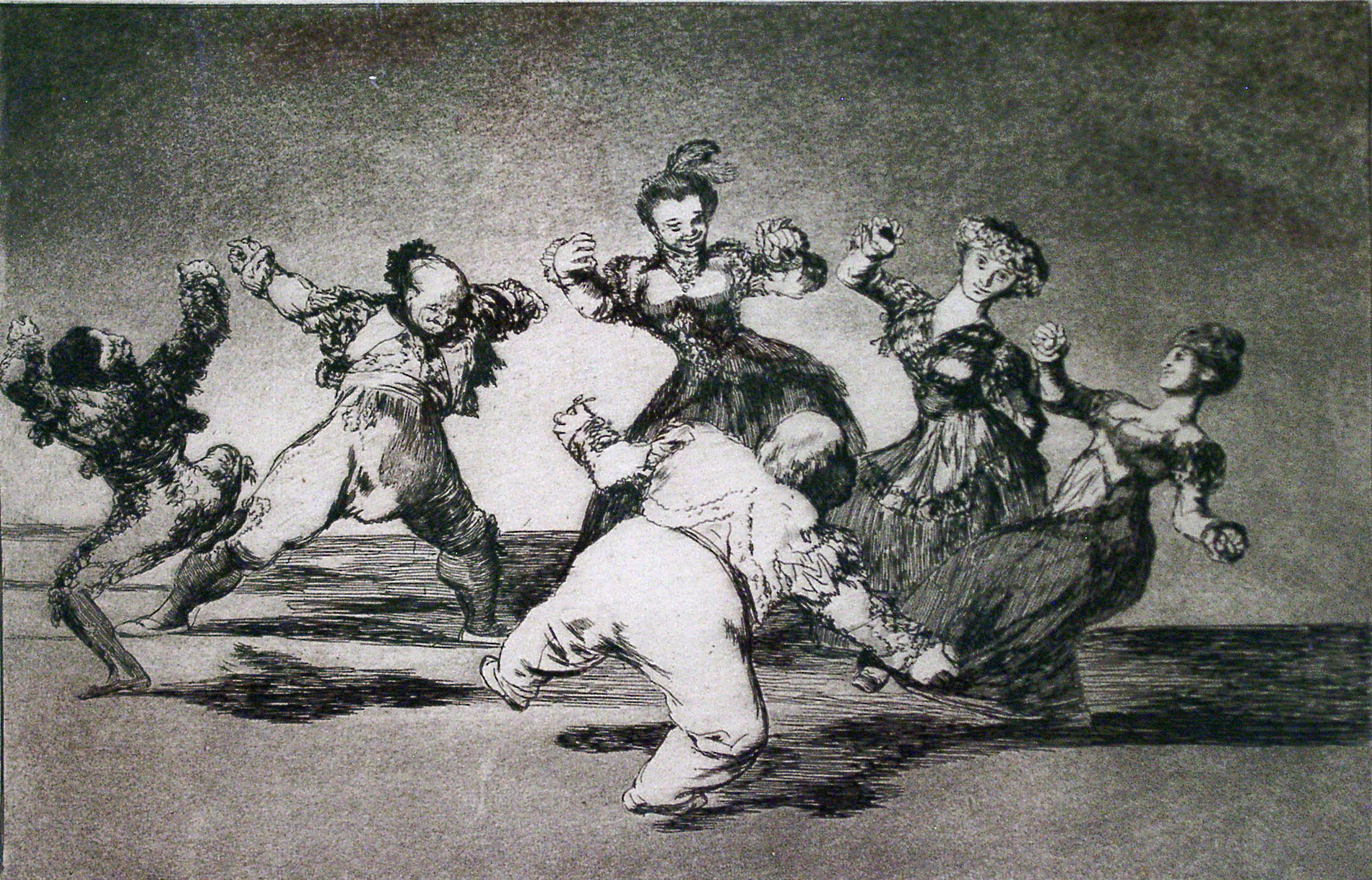Spain has been a great contributor to Western art. Spanish artists were influenced by the Renaissance movements of Italy, the flourishing of French art, as well as by their Moorish heritage.

When one speaks of Spanish art three principle figures spring to mind: El Greco, Velasquez and Goya. And when one thinks of these three figures, none excites the mind more than Goya.
Where Velasquez is the more masterful in portraiture and El Greco more refined in representing subtle dynamism, Goya eclipses both in the clarity of his imagery and the haunting tone of his expression.
Few artists have gone through so many metamorphoses in their painting methods. Originally painting in the Romantic style of the time, his first works of renown where church frescoes and 42 designs to be utilised as a base for various weavings. Soon noticed by the court, Goya was commissioned for portraits of the royal family and other members of the nobility. Here we can see him beyond the other artists of his time, for he weaves messages into all his subjects, showing the arrogance of a Duke (portrait of Manual Godoy) or the contentment of a Marquessa (Mariana Waldstein).
The most famous of these works is that of Charles IV of Spain and His Family. The work is almost satirical. We do not find

the king at centre piece, but the queen. About her are strewn the royal family members who look, in the words of one later critic, “like the corner baker and his wife after they have won the lottery”. Goya is there himself, a shadowy figure, scarcely noticed, painting on a canvas. More nebulous and more revealing is a background painting within the portrait, of Lot and his daughters, indicating the cankerous nature of the family.
Then war fell upon Spain and it worked a definitive change within Goya. A decade before and during a period of convalescence (Goya was plagued by various maladies his entire life, which prompted modern critics to hypothesize at length regarding the diagnosis of a long dead man), he produced a series of works darker than any that had been done before. His style shifted towards a clear impressionism and expressionism, and on canvas he created a world of stark nightmare and decay. The series was named Fantasy and Invention, and is in itself a precursor to his later Black Paintings.
During the war he saw many horrors, immortalised in his etchings The Disasters of War and in his many paintings including The Third of May.
After the Peninsular war and the reinstatement of the Spanish monarchy, Goya bought a property outside of Madrid and isolated himself. He had undoubtedly entered a period of darkness and despair within himself (evident in the name of his dwelling, “The Deaf Man’s House”) and he created perhaps his greatest masterpieces on the walls of his house and on canvas. These “Black Paintings” are all strange, uncanny or disturbing. We have a horrible Witches Sabbath in which women cavort with a black demon, Two Old Men Eating Soup transfers a terrible necrosis on an otherwise innocent scene, while Saturn Devouring His Children might be the most wonderfully horrible thing ever painted by man.
Goya began as a romantic artist, but during his life moved through impressionism and expressionism, presaging the modern era of art.
On the 2nd of July 2013 an auction was held in London for a Goya drawing called Si yerras los tiras! (If you miss the mark!), and is believed to be a political allegory, perhaps featuring King Ferdinand VII. And while it is slightly unlikely that you will find an original Goya work on bidorbuy, we have a range of quality art available from all four corners of the globe.









